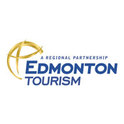Edmonton, Your Gateway to Scenic Settings
Park yourself in Edmonton for your next vacation and find yourself in Canada's greenest city.
Edmonton, Alberta | Edmonton is green – due to its vast green spaces as well as its reputation for being environmentally friendly. It started its curbside recycling program back in 1988 and it can boast being home to North America's largest composting facility.
But with more greenery in its boundaries than any other city in Canada, it's no surprise to find out that Edmonton maintains 11,367 acres of grass and is home to more than 460 parks. It's not just the grass alone though that makes Edmonton a scenic setting for visitors who adore the great outdoors. The city's River Valley is 21.7 times larger than New York City’s Central Park. Although residents and tourists enjoy year-round River Valley access to more than 22 major parks and trails for walking, jogging, bike riding, picnicking, snowshoeing and cross-country skiing, this is just the tip of Edmonton's bond with nature.
For close and friendly encounters of the natural kind, consider adding the Valley Zoo to your outdoor agenda. The Valley Zoo has a rich history dating back to 1959 and is home to more than 100 exotic and native species - it's a sure bet to be a hit with the younger set.
Inside, the wonders of the plant world will refresh and stimulate your senses. From a jungle setting to a desert oasis, Edmonton's pyramids - otherwise known as the Muttart Conservatory - bring these beauties to life all year-round.
Just outside and west of Edmonton, the Devonian Botanic Garden is not only Canada's most northerly botanic garden; it is a setting for 80 acres of display gardens. When there, be sure not to miss the Kurimoto Japanese Garden or the Sensory and Healing Garden.
Two of Canada's major national parks, Elk Island and Jasper, along with the provincial Blackfoot Recreation Area - are all within reasonable driving distances of the city.
Elk Island National Park is second only to Africa's famed Serengeti for wildlife viewing. The park, established in 1906, is Canada's first federal wildlife sanctuary for large mammals. Less than an hour from Edmonton, Elk Island is home to herds of plains bison, wood bison, deer, elk, moose and some 250 bird species.
Adjacent to Elk Island National Park there's the Cooking Lake Blackfoot Provincial Recreation Area, home to The Canadian Birkebeiner Ski Festival, Canada's largest cross-country ski festival. But the 24,000-acre provincial recreation area also offers 171 kilometres of equestrian, hiking and cycling trails on the rolling Cooking Lake Moraine. The park, which is open all year, has an extensive trail loop system that can be accessed from four staging areas.
Jasper National Park, which turned 100 in 2007, is the largest and most northerly Canadian Rocky Mountain national park. Sunwapta Falls, Mount Edith Cavell, and the Columbia Icefield Glacier Experience are just some of the scenic highlights this region offers. Jasper National Park is 370 kilometres west of Edmonton.
And for some eco green to go with the traditional outdoor green, there's the world's largest ecomuseum - Kalyna Country. Covering 20,000 square kilometres, extending from Edmonton east to Lloydminster on the Saskatchewan border, this ecomuseum is a heritage district that invites people to learn about its history, culture and geography.
To learn more about Edmonton’s environmental vacation offerings, visit
